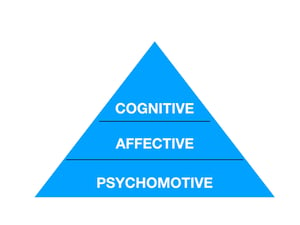In this globalised world, you will rarely find a company in Singapore that is not filled with people from culturally diverse backgrounds. When managed well, diverse workforces like these can contribute to enhanced creativity and innovation, because they create an environment for organisational learning and improved performance. In these, innovation and creativity can thrive (Lambert, 2016).
However, cultural diversity in the workplace poses some challenges. Language barriers and different ways of communicating can cause misunderstanding and culturally unique behaviours, values and norms can make it hard for people to connect with each other. To collaborate effectively and leverage the possibilities that a culturally diverse workforce can bring, we must overcome these challenges.
How to Manage Cultural Diversity in the Workplace
To manage a culturally diverse workforce, it’s important to increase our cultural intelligence. We need to learn from one another and seek a level of understanding that enables us to overcome the barriers that separate us.
Cultural Intelligence is the capability to relate and work effectively across cultures, understanding the unfamiliar and ambiguous ways of the other person in the way that someone of the same cultural background would do. It can be broken down into three domains: Cognitive, Affective and Psychomotive.
Here's Dr. Peter Cheng on Cultural Intelligence!
Increasing the Cognitive Domain of Cultural Intelligence
This domain is about understanding our cultural differences. It’s most important that we recognise these differences and don’t just assume that our counterparts think, feel and act the same way we do.
There are a few ways of gaining knowledge about what sets us apart. By being attentive and curious, we can observe our counterparts’ behaviours and learn about their ways. On top of that, we can ask them to share things about their culture, e.g. about the food they love, the traditions they live out or how they go through their day. And we wouldn’t be living in 2019 if we wouldn’t search online to find some basic information about our counterparts’ culture.
Being aware of the cultural differences helps us understand the people we work with better. However, coming from diverse cultural backgrounds doesn’t make us aliens - what we share is being human! Apart from focusing on what sets us apart, there are always similarities we share.
What similarities can you think of?
Increasing the Affective Domain of Cultural Intelligence
The affective domain is about engaging people emotionally.
Due to a psychological phenomenon called mere-exposure effect, we tend to like the things and people that are familiar to us. We’re drawn to people who’s appearances are familiar to us and the more often we see a person the more likeable that person appears to be.
This phenomenon explains why we are naturally drawn to certain people more than to others. Knowing about this, we can consciously make an effort to connect and engage with those people who are very unlike us. Showing that we care about them and are willing to get to know them better will strengthen the bond that connects us.
We can engage with them on an affective level by sharing our food and trying theirs, learning some key phrases of their language and making them feel appreciated in the way they are.
Increasing the Psychomotive Domain of Cultural Intelligence
The psychomotive domain is about communicating effectively.
As there may be language barriers that hinder effective communication. We need to make sure to listen carefully to what our counterpart has to say and take it seriously. Sometimes we tend to unconsciously attach lesser meaning to what a person says when it’s communicated in a language they don’t speak very well. We need to be consciously aware of this tendency in order for it not to compromise our communication.
To avoid misunderstandings, we can rephrase their sentences, capturing their key message and making sure that mutual understanding takes place.
Another thing to be mindful of is our non-verbal communication, which makes up as much as 93%! People who don’t share our culture may have different body language and tones of voice. Being curious and observant of their body languages and the way they express emotions will enhance our understanding further.
Increasing our cultural intelligence, we learn to understand our differences and similarities, concerning our preferences, likes, habits, traditions, acceptable and unacceptable norms, humour and ways of communicating. This shared understanding enables us to connect with each other and helps us collaborate more effectively. It will heighten our ability to share ideas, information and creative ways of doing things.
What can you do today, to increase your level of cultural intelligence?
If you want to manage cultural diversity in your organisation, schedule a call with one of our OD consultants and we'll be happy to help!

